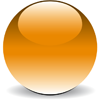Domain Diagram Type
Table of Contents

| Tutorial | Actifsource Tutorial – Domain Diagram Type |
|---|---|
| Required Time | - 30 Minutes |
| Prerequisites | - Actifsource Tutorial – Installing Actifsource - Actifsource Tutorial – Simple Service - Actifsource Tutorial – Statemachine |
| Goal | - Define Diagram Types to create and edit domain models in a graphical editor |
| Topics covered | - Create a user defined diagram type to display and edit domain specific diagrams - Create a domain diagram based on the diagram type to edit the underlying root resource - Define a highlight path from node to node over any edge - Define a tooltip for elements on the domain diagram |
| Notation | ↪ To do ⓘ Information • Bold: Terms from actifsource or other technologies and tools • Bold underlined: actifsource Resources • Monospaced: User input• Italics: Important terms in current situation |
| Disclaimer | The authors do not accept any liability arising out of the application or use of any information or equipment described herein. The information contained within this document is by its very nature incomplete. Therefore the authors accept no responsibility for the precise accuracy of the documentation contained herein. It should be used rather as a guide and starting point. |
| Contact | Actifsource AG Täfernstrasse 37 5405 Baden-Dättwil Switzerland www.actifsource.com |
| Trademark | Actifsource is a registered trademark of Actifsource AG in Switzerland, the EU, USA, and China. other names appearing on the site may be trademarks of their respective owners. |
Overview
- Create a user defined diagram type to display and edit domain specific diagrams
- Create a domain diagram based on the diagram type to edit the underlying root resource
- Define a highlight path from node to node over any edge
- Define a tooltip for elements on the domain diagram
Part I Preparation
Part II Create a Diagram Type
Part III Create a Domain Diagram
Part IV Define a Highlight Path
Part V Define a Tooltip
